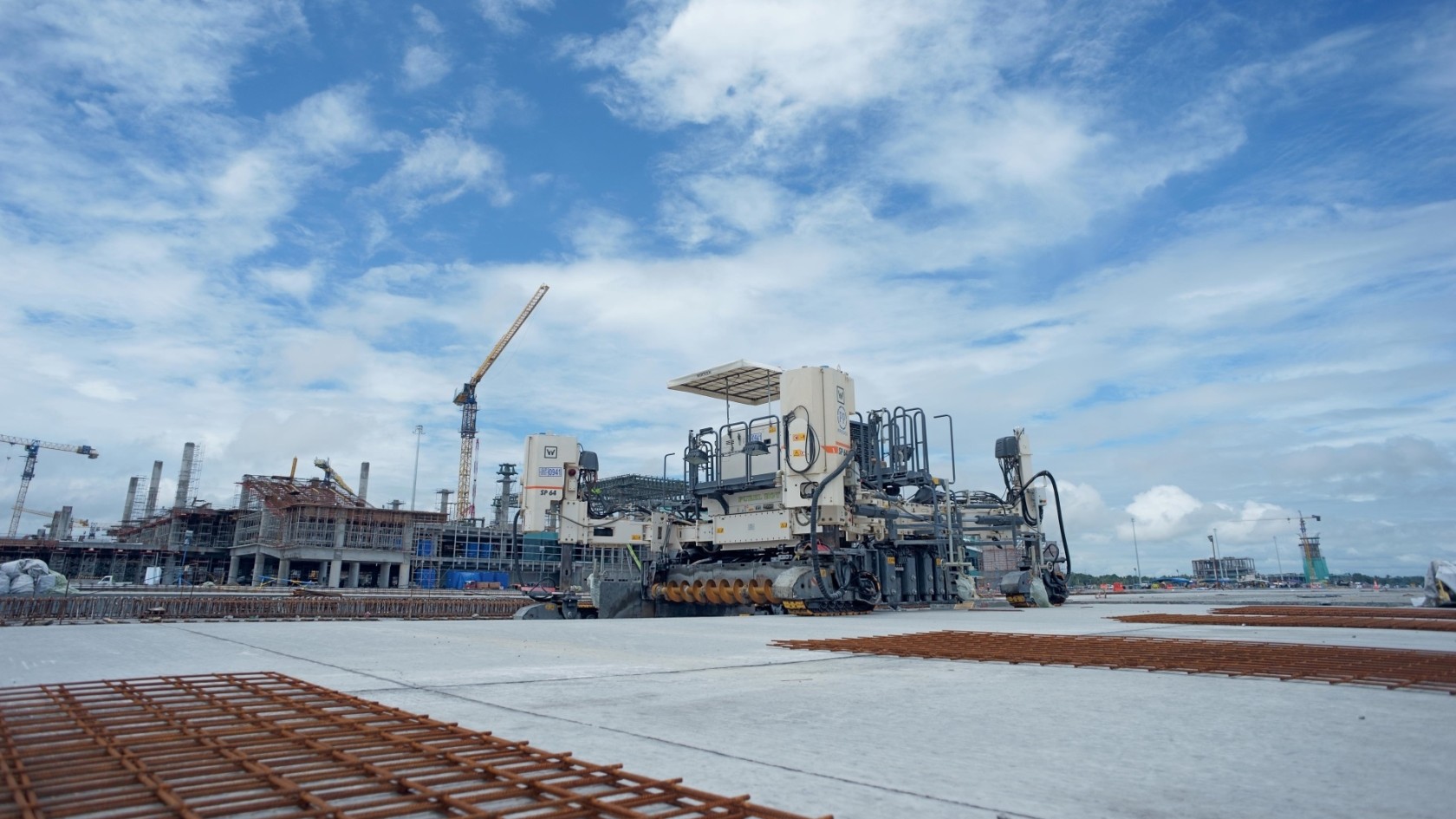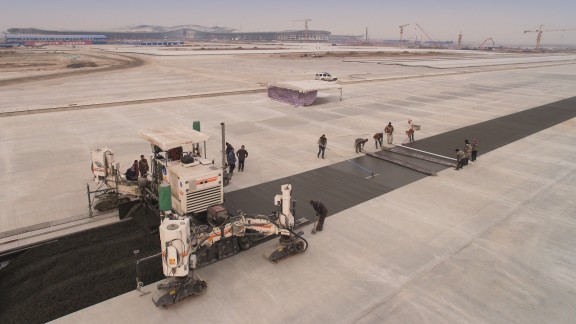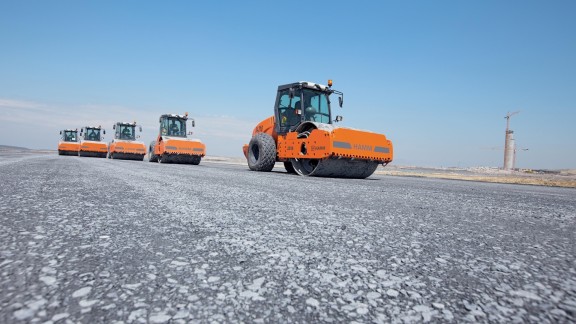

Asphalt or Concrete for New Airport Construction?
Both asphalt and concrete can be used as surfacing. While concrete is primarily used at major airports due to its long service life (up to 40 years), asphalt (which is cheaper and has a service life of only 15 to 20 years) is more frequently used at smaller airports.
No matter which material is used, the surface must be extremely flat and the friction characteristics excellent to ensure that flight operations remain smooth – regardless of the weather conditions. In order to prevent aquaplaning, the transverse grooves are cut into the concrete runway surface to allow the water to drain off.
Different design principles and construction methods can be considered depending on the load that the runways will exposed to during operation. The thickness of the surface ranges from 25 cm to 130 cm for runways that must withstand heavy loads.
In the case of a 130 cm thick pavement, the bottom 50 centimeters can first be used to improve and compact the partially non-cohesive, partially cohesive soil with cement. The next layer consists of 15 cm of a solidified mixture of hydrophobic cement and frost-resistant sand. WIRTGEN soil stabilizers and HAMM soil compactors are used for this purpose. A 25 cm thick CTB lies above it. Last but not least, slipform pavers lay a 40 cm thick concrete layer in vertical molds with a sinusoidal profile.







